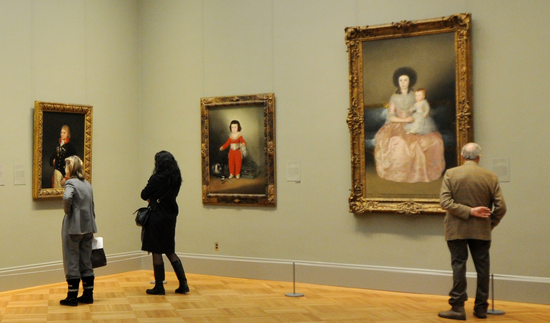For Museums, the Road to Insolvency Can Be Paved With Huge Checks
/
Late last year we asked "Do top art museums have an unsustainable funding model?"
According to a provocative opinion piece in the New York Times, the answer is, "For most of them, yes. And that's just the tip of the iceberg."
The column by Ben Davis, entitled "How the Rich Are Hurting the Museums They Fund," makes a compelling case that not only do mega-gifts for glitzy new capital improvements hamstring museums for the long-term—and we'll get to why in a second—they also boost inequality across the visual arts world as a whole.
You know the phrase "A rising tide lifts all boats?" It's kind of like that. But the exact opposite.
Let's start with the first argument, which should come as no great surprise to loyal IP readers. Davis sums it up accordingly:
For museum executives, the dirty secret of expansions has been that they are often motivated by the need to have some exciting new thing to rally board members and interest potential patrons. These institutions depend heavily on rich people to fund them. Those rich people like to pay for flashy new buildings; no one wants to donate to boring old museum upkeep.
Upkeep. That one innocuous word encapsulates up the problem with these mega-gifts. It's the multi-million dollar hangover that hits 18 months later. Except instead of popping a few Advil—and quite possibly downing a Bloody Mary—museum executives find themselves starting into a vortex of endless fundraising, exploding budgets, and job cuts.
Davis cites a 2012 report from the Cultural Policy Center at the University of Chicago that looked at more than 700 cultural building projects undertaken from 1994 to 2008 and concluded, "There was significant overinvestment in bricks and mortar during the building boom—especially when coupled with the number of organizations we studied that experienced financial difficulties after completing a building project."
We've spent time looking at alternatives to this model. Many museums have held firm and resisted the urge to embark on a kind of capital expense arms race. But the worlds of high-stakes philanthropy and cutting edge museums aren't walled fortresses, neatly sequestered from smaller outfits that strive to remain pure and unspoiled.
These mega gifts, in short, have ripple effects throughout the visual arts world, for better or worse.
Which brings us to Davis' second point. In a—or our—perfect world, mega-donors would write a dozen generous—but not outrageous—checks to a dozen mid-tier museums. It wouldn't be as flashy as a seven-figure give to an esteemed Big Apple institution, but its effect would likely be more impactful. Why is that?
Well, most obviously, the money's reach would be more extensive. But more importantly, mega-donors' propensity for mega-gifts comes at a time when most important financial lifeline for smaller museums—public grant dollars—is being cut. Adjusted for inflation, public arts funding is 15 percent lower today than it was 20 years ago.
"When grant funding is slashed, the organizations that suffer most are the smaller groups, which have lower levels of visibility among other donors," notes a recently analyzed report, Diversity in the Arts, by the DeVos Institute of Arts Management. "This means that arts organizations of color—along with rural, avant-garde and service organizations—suffer disproportionately."
And therein lies the irony. By cutting gargantuan checks to huge museums, donors aren't just hurting the museums themselves in the long run, they're also harming the underrepresented communities they, at least conceptually, want to support.
Davis points to a self-evident solution to help remedy the aforementioned inequality (and no, it's not getting Ford on the case. Although that wouldn't hurt.) "There's a case for a significant increase in public art funding that's more than just a sentimental call for a cause favored by the well-to-do," he argues. "In fact, it's based on correcting for the biases of the rich."
This sentiment, while well-intentioned, doesn't go far enough.
First, would more public art funding be great? Of course. Will it happen? Probably not. And even if it did, would it make a dent in the substantial disparities at play here, particularly at a time when donors and purveyors of "ego-seums" have showed little inclination for reigning in their profligate spending?
Sadly, no.
But more importantly, a sense of proportion and context must be considered. For example, David Geffen recently gave $100 million to the Museum of Modern Art. We hate to repeat ourselves here, but in an increasingly metrics-based philanthropic age where a gift is measured by its collective impact, why not instead cut $10 million checks to 10 deserving—albeit smaller—institutions who need to shore up their finances, expand their collections, and fund their endowment?
We readily admit it's not our money. Yet study after study shows these mega-gifts can do more harm than good not just for the recipients, but for smaller museums struggling to stay afloat.
Why are we letting donors off the hook?








